Masterpiece Story: The Dessert by John F. Francis
The Dessert by John F. Francis is a masterpiece of still-life painting. Its colorful and elaborate composition reflects 19th-century American and...
James W Singer 11 July 2025
13 July 2025 min Read
Pierre-Auguste Renoir’s Dance at Le Moulin de la Galette is a masterpiece of French Impressionism and a celebration of happiness and prosperity.
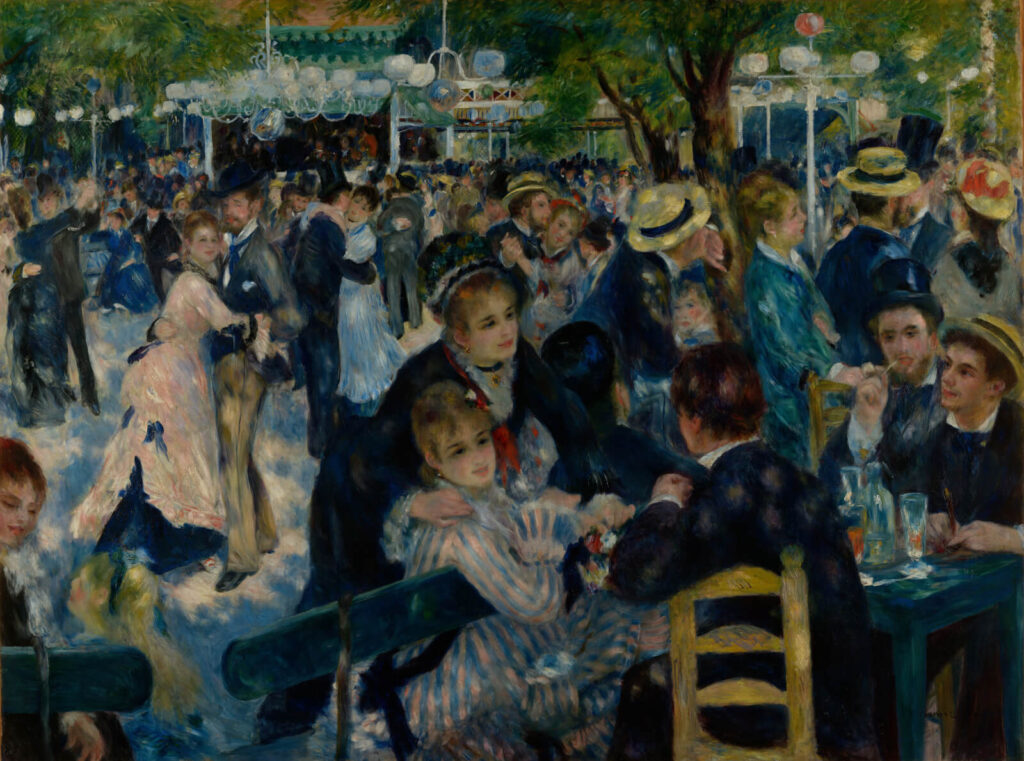
Pierre-Auguste Renoir, Dance at Le Moulin de la Galette, 1876, Musée d’Orsay, Paris, France.
Pierre-Auguste Renoir (1841-1919) is one of the most famous French Impressionist painters alongside Claude Monet and Edgar Degas. He and his Impressionist friends and colleagues were drawn to industrialized Paris and the leisure activities and entertainment pursuits of Parisians. They explored and painted vibrant scenes of cafés, parks, and ballets. The vivacious and joyful atmosphere of a popular dance garden is brilliantly captured in Renoir’s masterpiece. It is Renoir’s most important work of the 1870s, and it was first displayed in the Third Impressionist Exhibition in 1877.

Pierre-Auguste Renoir, Dance at Le Moulin de la Galette, 1876, Musée d’Orsay, Paris, France. Detail.
Dance at Le Moulin de la Galette, originally titled Bal du moulin de la Galette, was painted in 1876 as an oil on canvas. It measures 176.5 cm wide and 131.5 cm high ((52 in × 69 in). It presents a crowded evening scene at the Moulin de la Galette which was a popular dance garden on the Butte Montmartre in Paris, France. The dance hall is filled with working-class Parisians in their best after-work clothes.
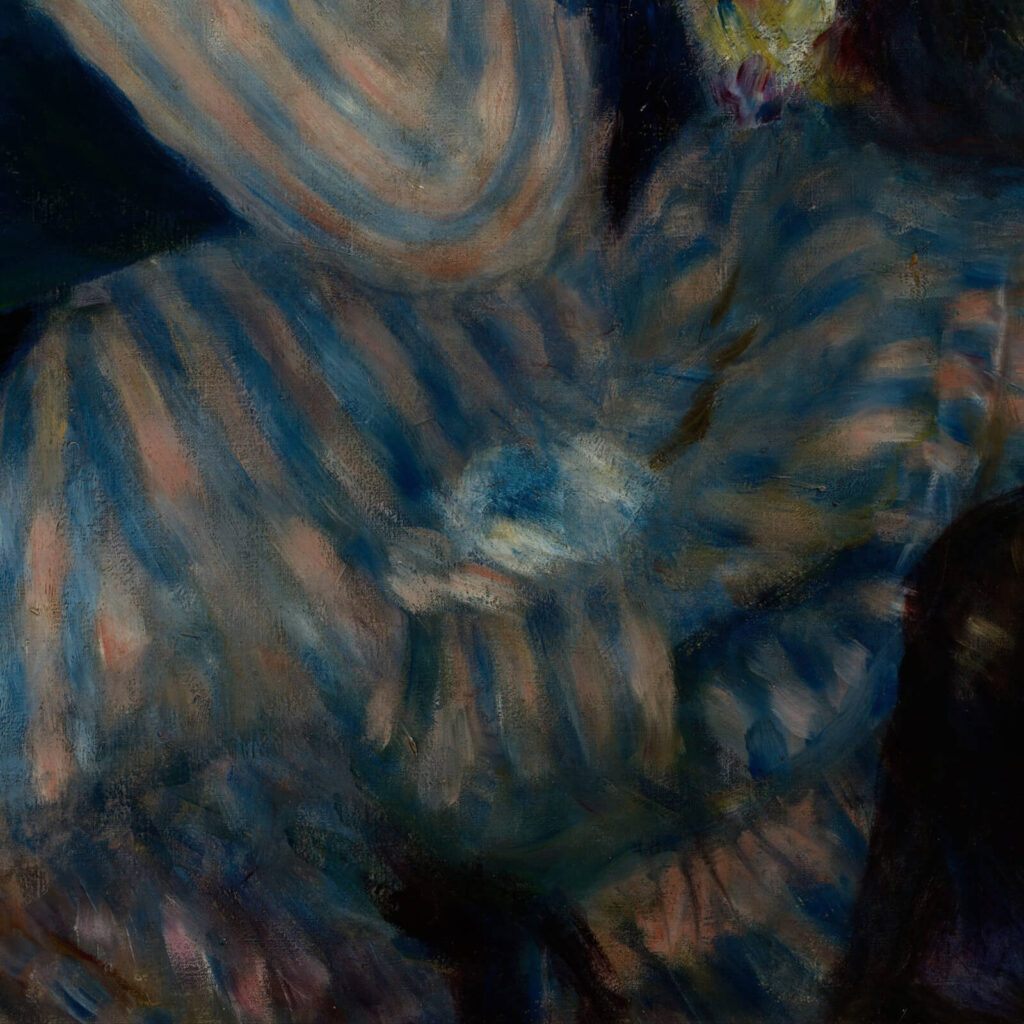
Pierre-Auguste Renoir, Dance at Le Moulin de la Galette, 1876, Musée d’Orsay, Paris, France. Detail.
In the foreground are parents and children who are sitting, chatting, and drinking.
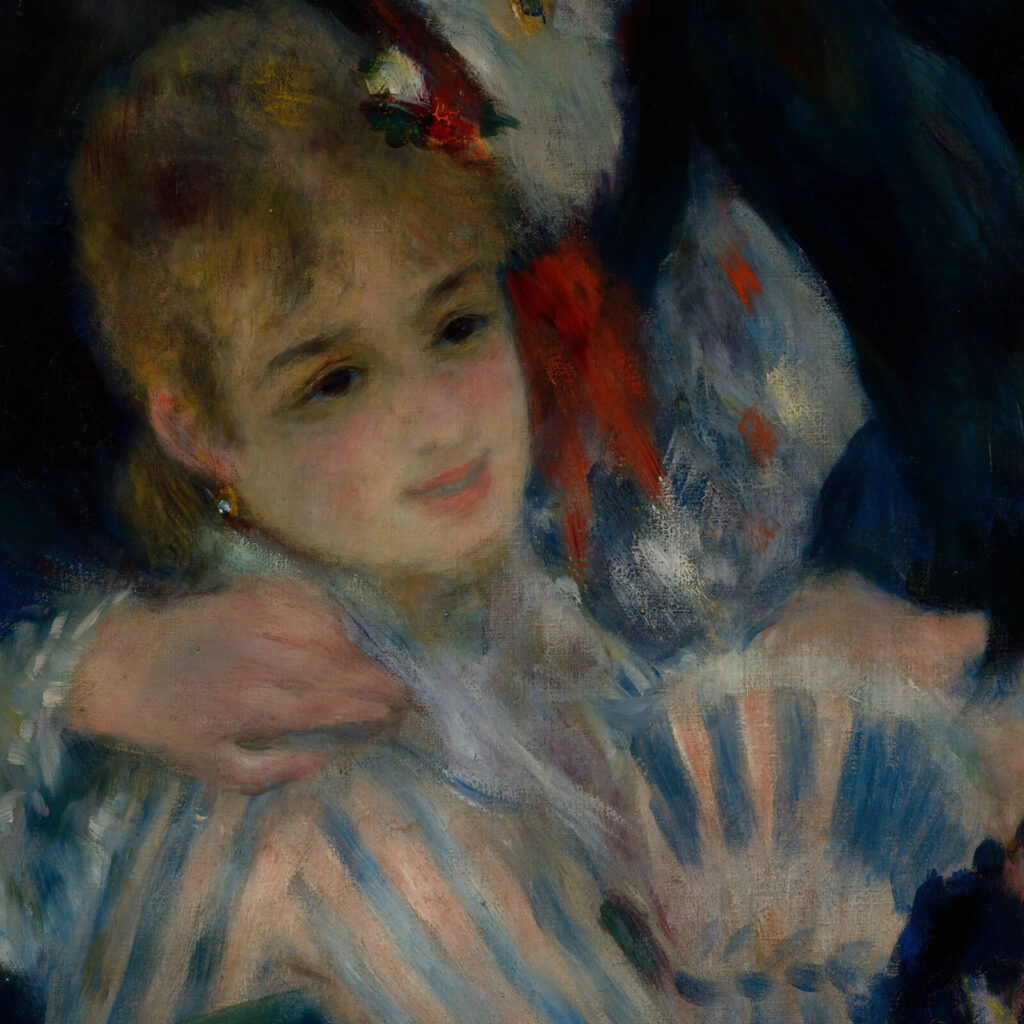
Pierre-Auguste Renoir, Dance at Le Moulin de la Galette, 1876, Musée d’Orsay, Paris, France. Detail.
Lovers and friendly couples can be found in the midground dancing the evening away.
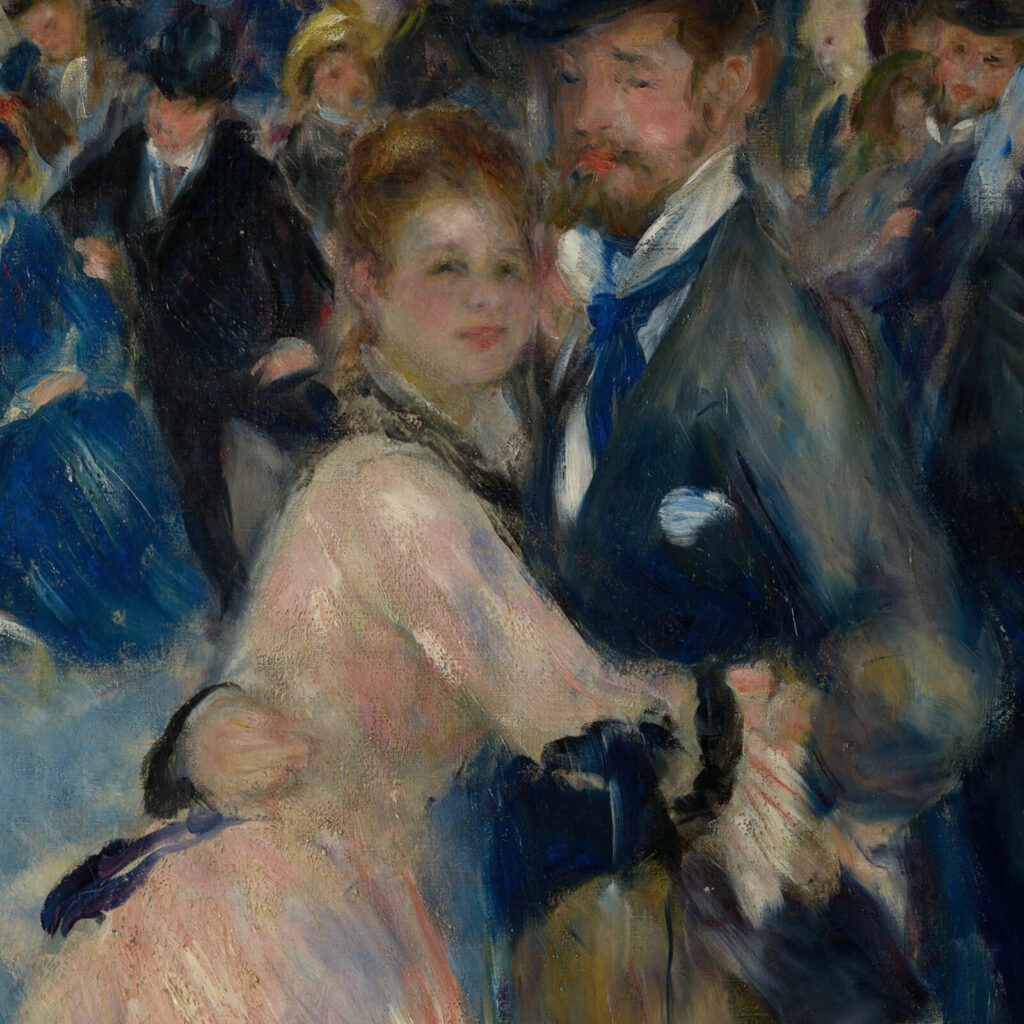
Pierre-Auguste Renoir, Dance at Le Moulin de la Galette, 1876, Musée d’Orsay, Paris, France. Detail.
In the background is an orchestra playing music on violins and clarinets.
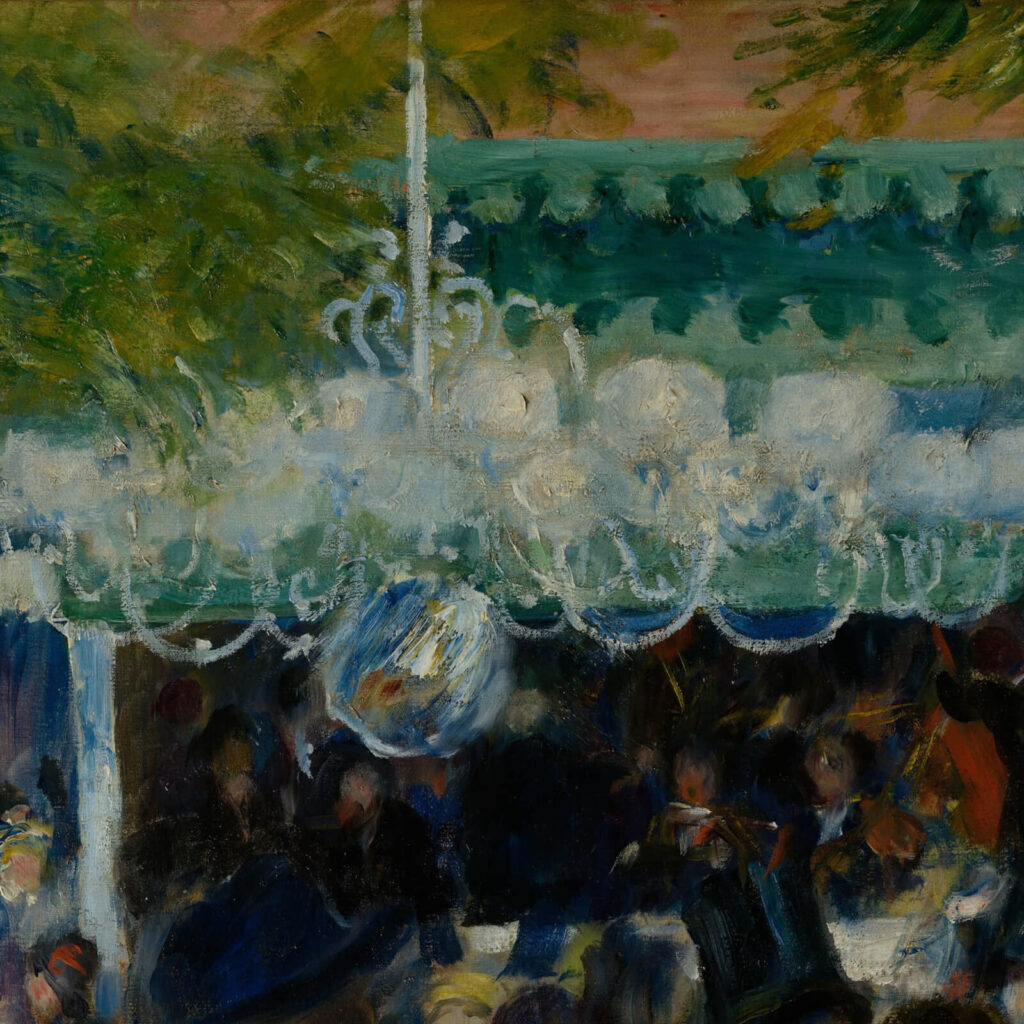
Pierre-Auguste Renoir, Dance at Le Moulin de la Galette, 1876, Musée d’Orsay, Paris, France. Detail.
Gas chandeliers and torchières dot the scene, but they are not lit. Therefore, this lively bustling scene is a Summer late afternoon or early evening when the sun remains high and the day is long.
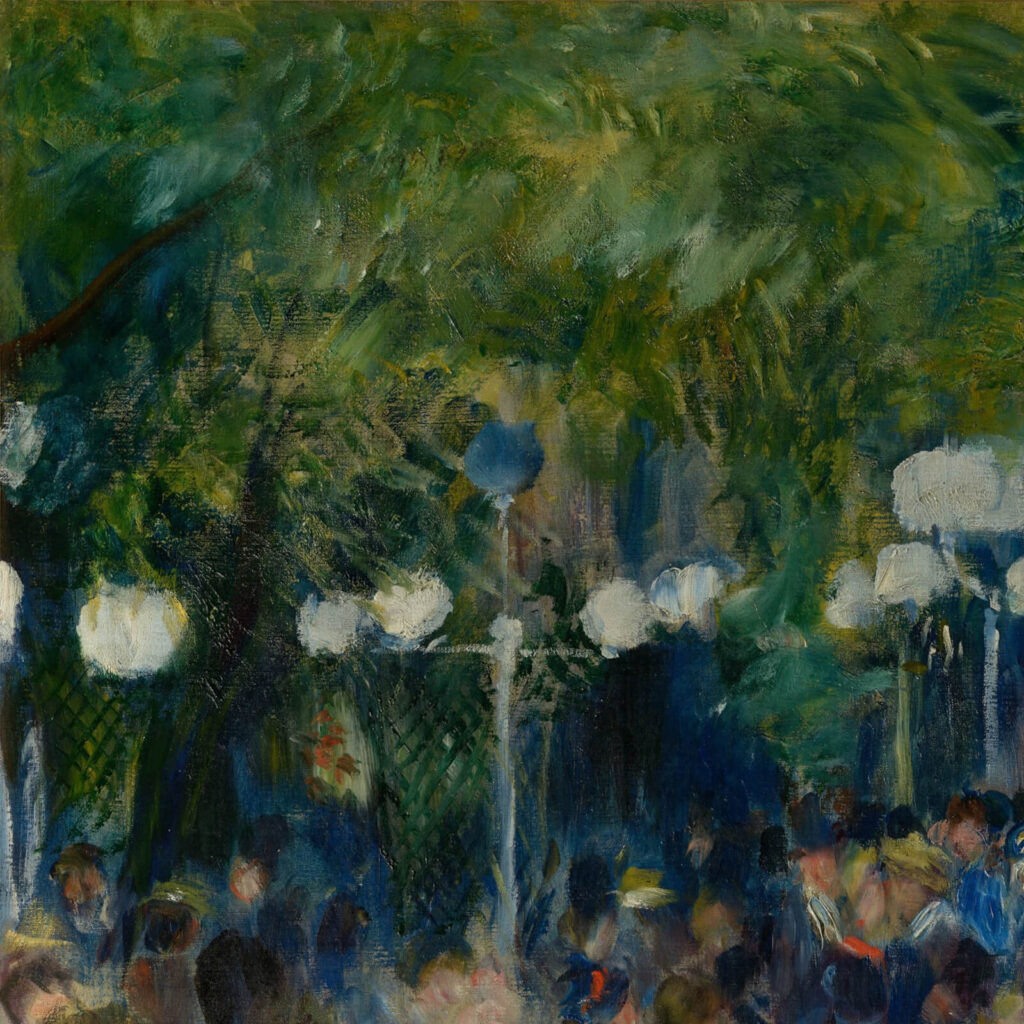
Pierre-Auguste Renoir, Dance at Le Moulin de la Galette, 1876, Musée d’Orsay, Paris, France. Detail.
Pierre-Auguste Renoir captures an idealized image of the Moulin de la Galette by excluding the seedier elements of reality. The Moulin de la Galette had a long-standing reputation as a pick-up place for easy women and available prostitutes. However, unlike Henri de Toulouse-Lautrec who loved to paint prostitutes and their clients, Renoir painted a happier, respectable, idyllic summer afternoon. If love is present in the painting, it is a purer love filled with romance and courtship. It is not the paid mercenary love of the Moulin Rouge.
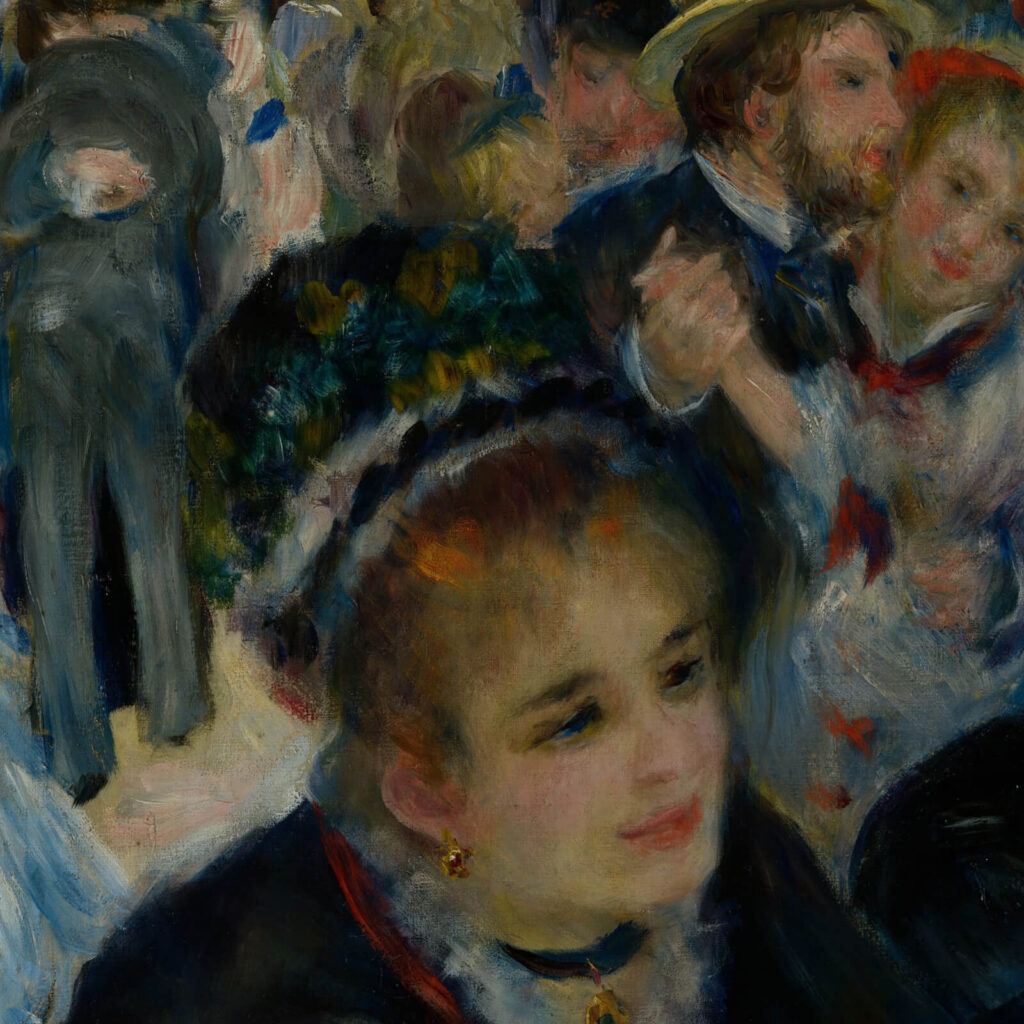
Pierre-Auguste Renoir, Dance at Le Moulin de la Galette, 1876, Musée d’Orsay, Paris, France. Detail.
Today, especially in the last 5 years, there has been a strong social movement towards supporting a life-work balance. This idea of equalizing recreational time and work time has gained momentum as work-hustle or workaholic culture has shown to cause mental health burnout, neglected relationships, and long-term lower work productivity. While the phrase life-work balance is a very 21st-century term, it is not a 21st-century concept. It began in the later years of European and American industrialization. Renoir’s painting celebrates 19th-century life-work balance.
France began industrializing in the early 1850s and was in full development by the 1860s. However, it was not until the 1870s that a life-work balance became possible through many regulations surrounding work hours and work shifts. Employers began establishing more set work hours for their employees, employees’ shifts became more regimented, and employees had more planned schedules.
More and more employees had very solid ideas of when they were working, and therefore they could plan their off-time or recreational time to pursue events and experiences previously unavailable to them. Anyone working today who has an unregimented or inconsistent schedule knows the headache of planning life outside work. Planning social engagements and business appointments is a nightmare as some engagements and appointments may need weeks of advanced scheduling!
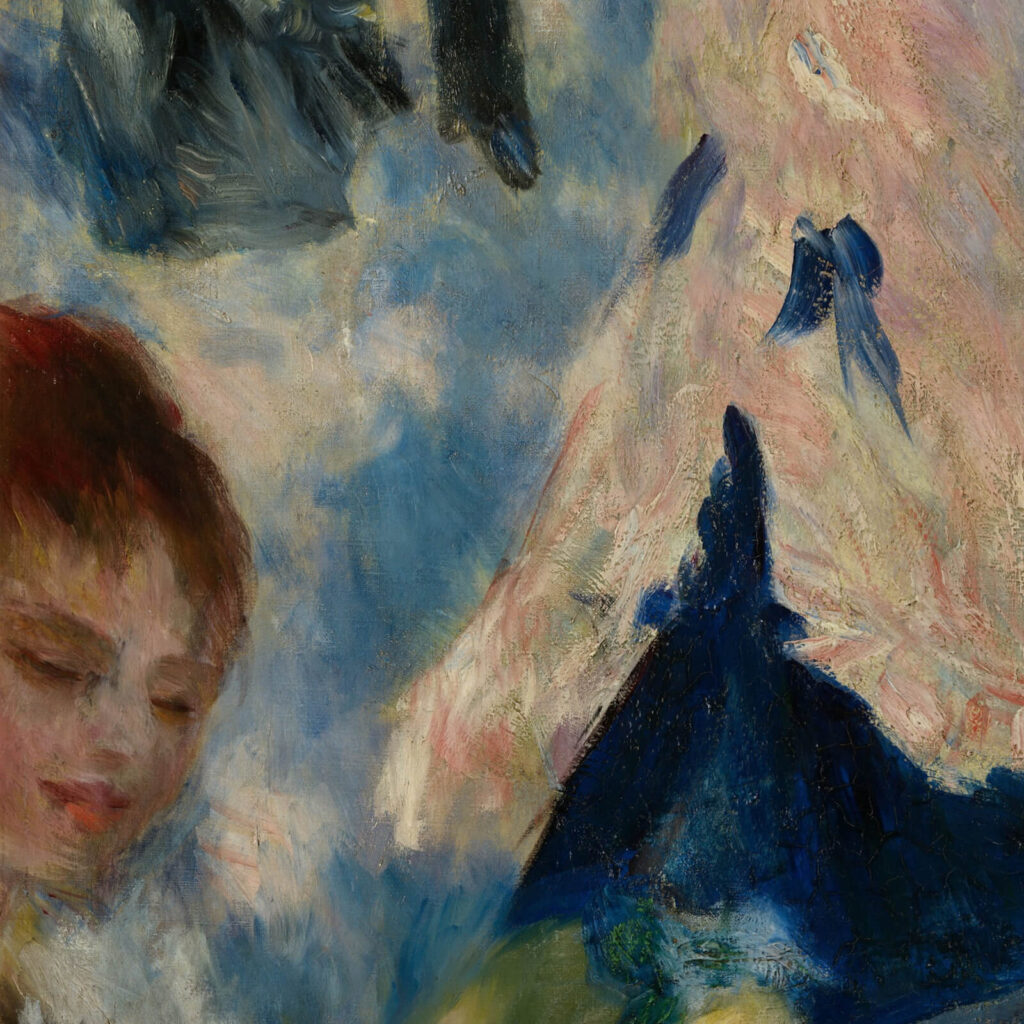
Pierre-Auguste Renoir, Dance at Le Moulin de la Galette, 1876, Musée d’Orsay, Paris, France. Detail.
With the Parisian working class experiencing regularly consistent off-time by the 1870s, the boom of recreational activities was phenomenal. Cafés, parks, and ballets swarmed with groups of families and friends seeking the pleasures of Paris. Friends who worked in different companies or industries could now compare planned work schedules and decide on a mutually good time to meet for a good time.
Pleasure pursuits boomed and the economy did too. Hence, Dance at Le Moulin de la Galette celebrates the birth of recreational time and of life-work balance by honoring a popular dance hall filled with Parisians in revelry. They chatter, drink, dance, and eat galettes in a cacophony of merriment.
It has to be argued that Pierre-Auguste Renoir was the Impressionist master of exuberance and coloring. His 19th-century images are filled with an 18th-century Rococo sensuality expressed through his swirling vibrant brushstrokes and tenderly sensitive lighting.
Renoir greatly admired Jean-Antoine Watteau and Jean-Honoré Fragonard, two leading French artists of the 18th century, who painted many outdoor party scenes known as a fête galante. Hence, Renoir creates his own fête galante but set in a modern Paris park through Dance at Le Moulin de la Galette. If either Watteau or Fragonard could time-travel to 1870s Paris, they might have painted something similar to what Renoir achieved. The fashions and architecture are different, but the feelings of love and happiness are timeless.
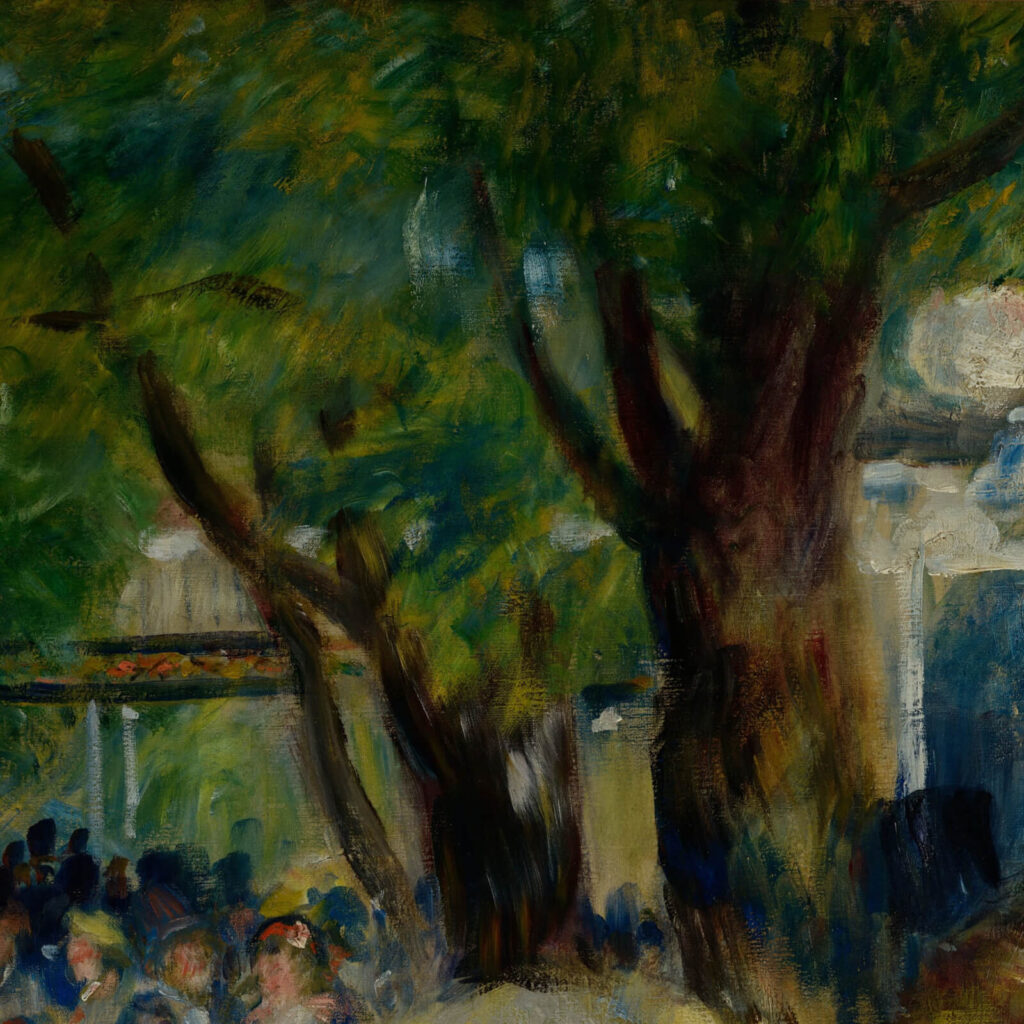
Pierre-Auguste Renoir, Dance at Le Moulin de la Galette, 1876, Musée d’Orsay, Paris, France. Detail.
In addition to the visual sensuality, Renoir also implies auditory sensuality with sounds of lively music, hearty laughter, and tinkling glasses through the blurred and fleeting outlines of his figures. They are all in movement causing sound. Silk dresses rustle against bosoms and bustles, wine bottles refill empty glasses, and rosy lips release amusing gossip and funny stories. Everyone is doing something, and all of those things are causing sound. A vibrant life is not a quiet life.
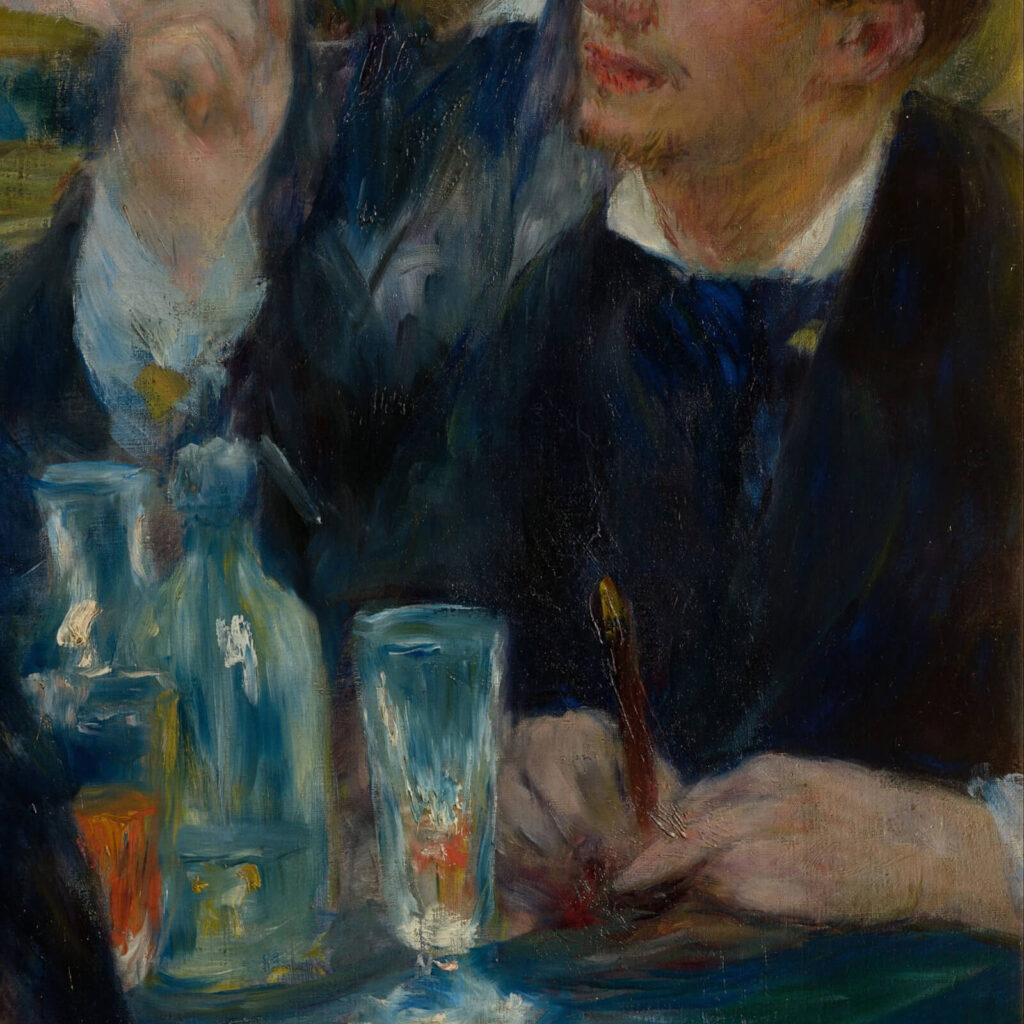
Pierre-Auguste Renoir, Dance at Le Moulin de la Galette, 1876, Musée d’Orsay, Paris, France. Detail.
Dance at Le Moulin de la Galette is a celebration of happiness and prosperity. Modern viewers to the painting are easily enchanted by its radiating positive energy. It inspires Golden Age Syndrome, an idea that a previous era was better than the current era. How could it not? Everyone looks healthy, wealthy, and happy. However, remember this painting does not capture a past reality. It captures a filtered idyllic past vision.
Renoir loved a happy painting just like Jane Austen, the great English novelist, loved a happy ending. Both Renoir and Austen feed the soul with love and romance, but not realistic expectations. Perhaps that is why modern society still loves Renoir and Austen. They inject pleasure into our lives. We know they are not objective representations of 19th-century European life, but they do add a touch of romance, nostalgia, and class to our 21st-century lives. Thank you Pierre-Auguste Renoir for this painting, you feed the hungry modern soul.
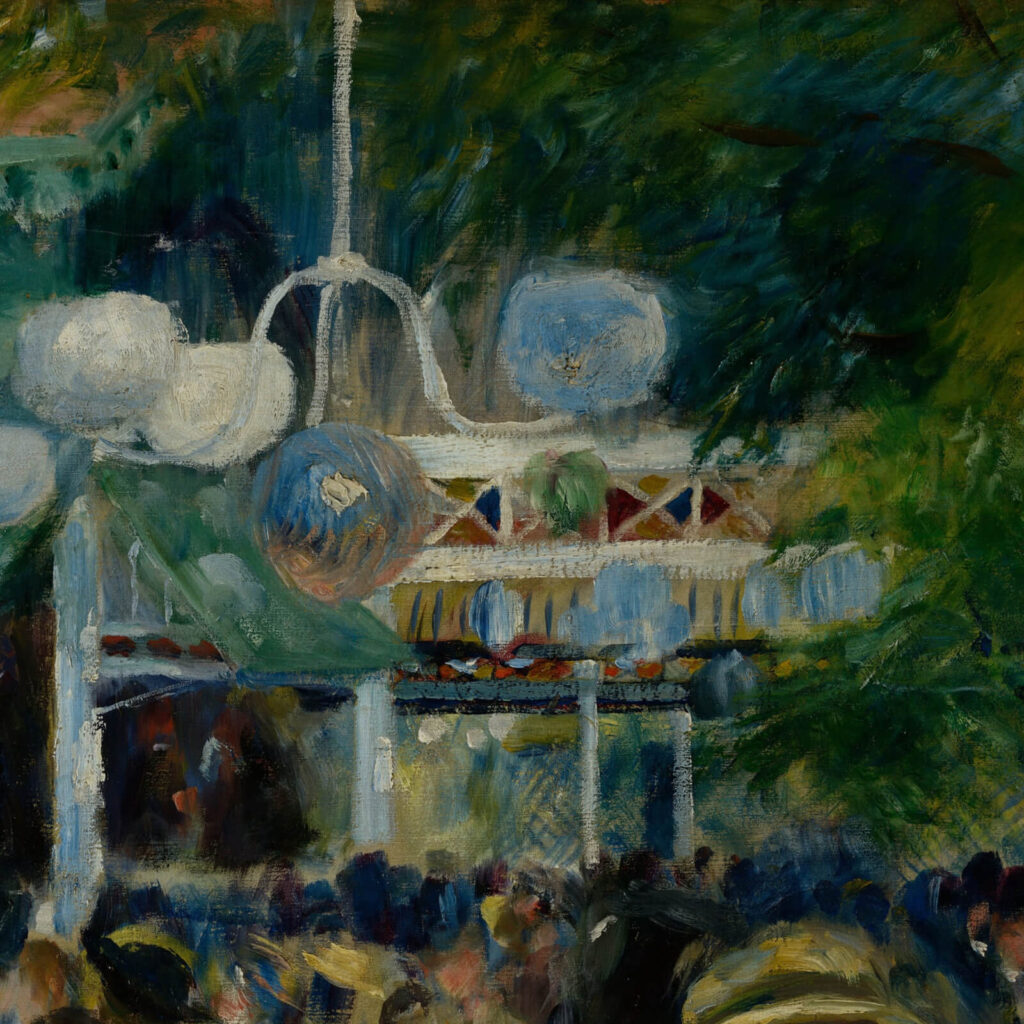
Pierre-Auguste Renoir, Dance at Le Moulin de la Galette, 1876, Musée d’Orsay, Paris, France. Detail.
10,000 Years of Art. London, UK: Phaidon Press Limited, 2009.
“Bal du moulin de la Galette.” Collection. Musée d’Orsay, Paris, France. Retrieved 9 December 2023.
Beckett, Wendy, and Patricia Wright. Sister Wendy’s 1000 Masterpieces. London, UK: Dorling Kindersley Limited, 1999.
Gardner, Helen, Fred S. Kleiner, and Christin J. Mamiya. Gardner’s Art Through the Ages. 12th ed. Belmont, CA, USA: Thomson Wadsworth, 2005.
DailyArt Magazine needs your support. Every contribution, however big or small, is very valuable for our future. Thanks to it, we will be able to sustain and grow the Magazine. Thank you for your help!